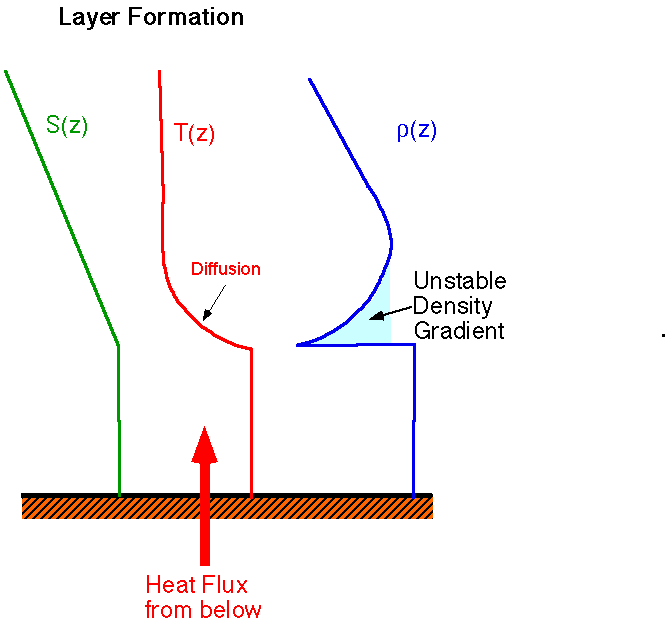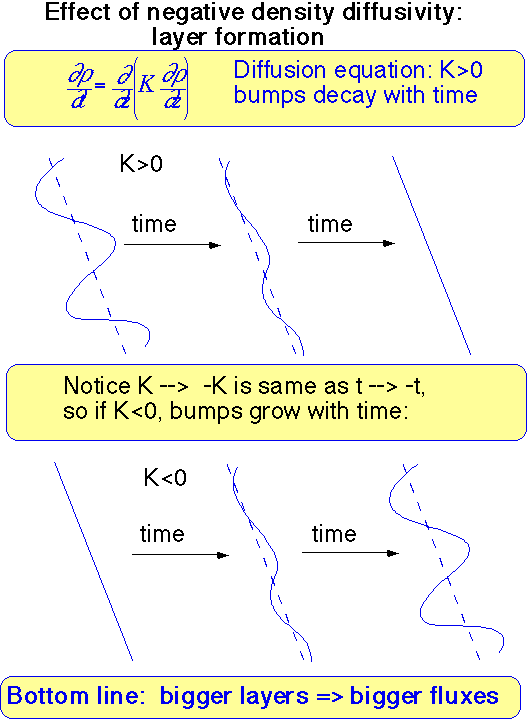Diffusive Convection - Layer formation
Purpose:
To demonstrate the growth of diffusive layering
What Happens:
A tank of water is stably stratified with salt solution. The tank is
heated from below, and a series of convecting layers separated by
sharp diffusive interfaces forms.
Physics of the Phenomenon:
The heating at the bottome of the tank causes a convecting layer to
form that is warmer than the water above. Molecular heat diffusion in
the region above the layer makes a warm-salty under cool-fresh
gradient region, and this eventually goes unstable and breaks down,
forming a new convecting layer above the original one. Then molecular
heat conduction continues into the region beyond, causing the system
to repeat the cycle indefinitely.

The heat flux is large and upwards, while the salt flux is quite small
because of the slow diffusion of salt. The net result is a downwards
density flux, dominated by the heat flux. In terms of eddy
diffusivities, the effective salt and heat diffusivities are positive
(i.e., downgradient), but the density diffusivity is negative -- an
upgradient flux! Consider the diffusion equation for density, with a
negative diffusion coefficient. This is equivalent to ordinary
diffusion with time running backwards; instead of perturbations
"diffusing away", they grow instead, causing the stratification to
develop layers.

References: Turner, J.S., Buoyancy Effects in Fluids, Cambridge
University Press, Cambridge, U.K.368 pp.,1973.
Credits:
Movie and text - Barry Ruddick
Digitization of movie - Dave Hebert
Load and run
layer formation movie


